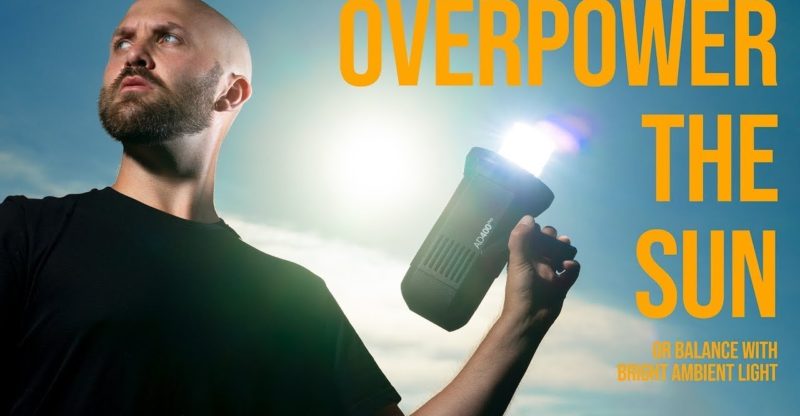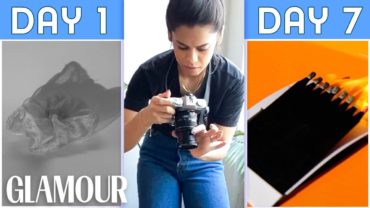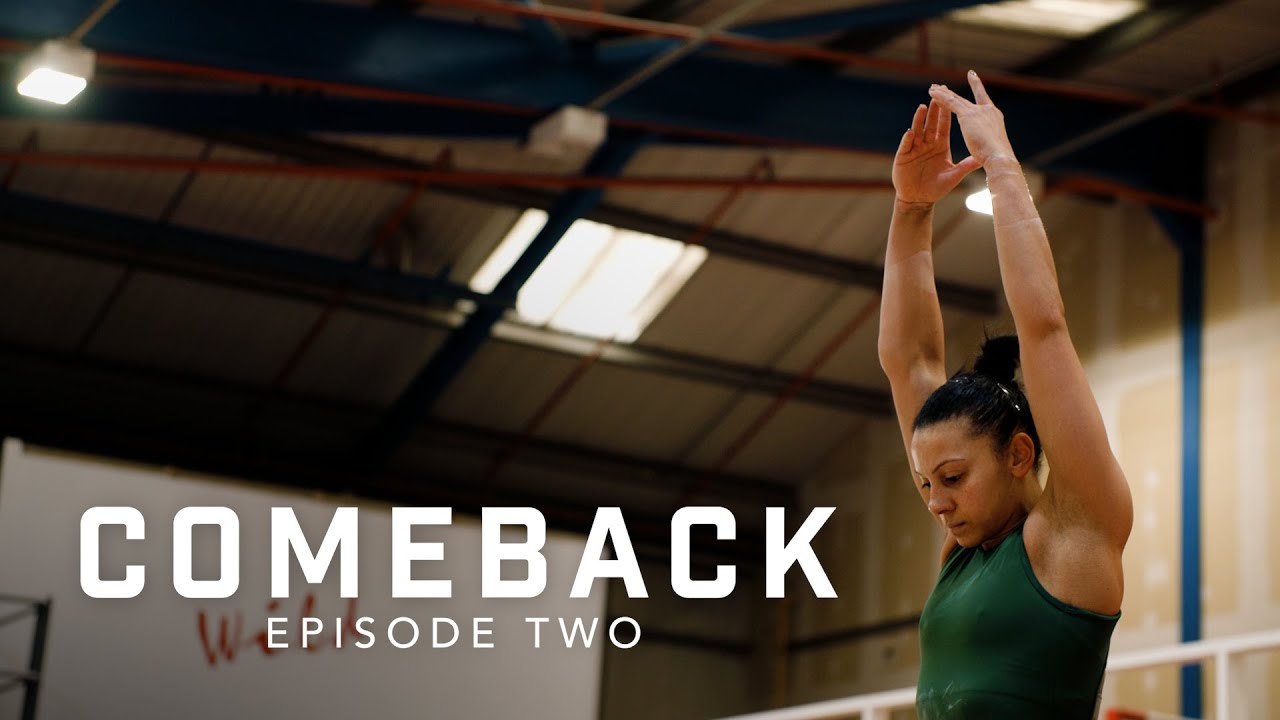OVERPOWER the SUN with FLASH // What Godox Flash do you need?
what's going on guys it's Robert hall and today I want to answer the question will this strobe overpower the sun now Before we jump into this I want to say I hate the terminology overpower the Sun because to me or maybe to amateur photographers it sounds like you're saying you want the Sun to not be a highlight in your image you want to make the Sun dark and that is not only extremely difficult it's just not that great for the rest of your image here you can see an example of where I attempted to overpower the Sun and we are at F/22 with a 10 stop ND filter on my camera so I don't even want to know what the equivalent aperture on that is but you can see the result the sky is completely pitch black surrounding the Sun and we've still got a son that is clipped so we didn't even accomplish the goal of overpowering the Sun so the short of it is you can't really overpower the Sun so that's why I hate the phrase but the term is so popular and what people are really trying to say is that they're trying to balance their exposure as well as a light with really bright conditions which takes a lot of flash power now all the time when people are asking will the V860 version to overpower the Sun or the ad200 or the AD400 for the AD600 Pro they're asking this question and people are giving them wildly different answers now the reason we get such vastly different results is because people have different methods and techniques for accomplishing photographing in bright sunlight one is the working distance the distance that people typically use their light at if one photographer uses a light two feet away and another photographer uses a eight feet away there is a massive difference there in the light intensity that makes it onto the subject and then there's modifiers modifier is like a reflector or a fern l-head are way more efficient at putting light on a subject then say an umbrella or a reverse umbrella or a massive softbox and lastly is some people are using high speed sync and others are using standard sync and that's a big difference because standard sync is about two-and-a-half stops more efficient than high speed sync now a lot of people mix that up and don't understand that high speed sync is actually a less efficient way to light a subject but if you need more information on that you can check out this video in the top right corner so I want to answer the question once and for all today what strobe do you need to overpower the Sun and I'm going to consider all factors modifier high speed sync for standard sync and the type of light that you're using so today we are taking four lights in four different modifiers in both standard sync and high speed sync and we're gonna find out what is the max distance that we can use them at in order to balance with bright outdoor sunny conditions so for the lights that we're using today I've got a good mix that I think represents what most people would be using outdoors on location starting all the way down with a V860 version two-speedlight from godox that's going to be your standard speedlight the same power as a canon 600ex-rt or a Nikon Sb-910 after that we're gonna bump up to the godox ad200 aka the Evolv 200 then we'll jump up to the godox AD400 Pro aka the flashpoint Xplor 400 Pro and finally we'll finish off with the big one the godox AD600 Pro aka the flashpoint Xplor 600 pro 4 modifiers we're using the Fresnel head on the ad200 and the V860 version 2 and then the reflector on the bare bulb units like the AD400 Pro and the AD600 Pro then we'll keep the Fresnel head on the ad200 and we'll put an umbrella in front of all four we're gonna use a translucent thirty-two inch white umbrella after that we're gonna switch the ad200 to the bare bulb then we're gonna switch to softboxes we're gonna start with a 25 inch beauty dish ez lock softbox this is your standard collapsible softbox we're gonna do that with just the outer diffusion and finally we're gonna use the 43 inch Grand Para Pro a lot of you guys have been asking me about this series of soft boxes and I finally got my hands on one so we're gonna use that which is a completely empty softbox we're gonna use that with just the outer diffusion and a little spoiler that 43 inch softbox is actually going to give you much different results than you think so we got out here and we set up our cameras for this sunny 16 rule if you don't know the sunny 16 rule is an aperture of F/16 with a shutter speed and ISO that correlates so 1/100 of a second and ISO 100 or 1 to hundredths of a second and ISO 200 that in bright sunlight should give you a pretty safe exposure we use that equivalent exposure for both high speed sync and standard sync and we tested to find out the distance that each modifier could get us to balance with those conditions it's a good time to tell you that my channel is sponsored by Adorama which buys me the time to create these type of videos without the influence from any specific camera brand I personally shop at Adorama for their great deals on a wide selection of products as well as our support of those products down the road so if you end up interested in any of the products that are used in this video you can find links to those in the description below for the first slight I'm gonna show you how we got our results but afterwards I'll just give you the numbers on the remaining three we dialed in our camera settings to be equivalent to the sunny 16 rule here's a shot of just the ambient life we started with the 600 Pro in standard reflector and moved it back and forth until we got the exact meter reading for a proper exposure on my sekonic L858D-U light meter then we took a shot just to provide a sample we then noted the distance from the flash to Alex all measurements were taken where the actual flash bulb was rather than the front of the modifiers since that would vary so much based on the modifier for the reflector it was nine and a half feet away to get a proper exposure we then added the 32 inch umbrella so we lost about one and four tenths of a stop of power which means at minimum that's why the AD600 Pro is designed that way with the umbrella mechanism that way instead of the light being pulled to tip over the umbrella will just fall off which umbrellas are a lot more disposable we then added the 32 inch umbrella and had to move the light in to seven and a half feet we then switched to the 25 inch ez lock beauty gift softbox and found it was more efficient than an umbrella as we use it at eight feet and four inches you know why aren't you holding and hitting tests and telling me the number I move it see we're getting a process here again this softbox only has outer diffusion and no beauty dish plate if you were to add either of those expect to bring it in closer finally we brought out the 43 inch grande para box Pro I expected to have to move it in quite a bit because it's so much larger of a modifier but instead it gave me the biggest surprise of the day why the 43 inch softbox was able to balance at 10 feet away which was further than even the reflector making it our most efficient modifier I imagine this is because of the reflectiveness of the interior as well as flash tube being completely unobstructed once we had our four results we then switched to high speed sync the reflector balanced at six feet and two inches the shoot through umbrella five feet the 25 inch softbox six feet and the 43 inch softbox seven feet we then switched to the AD400 Pro in standard sync the reflector gave us eight feet and four inches the umbrella six feet and 10 inches the 25 inch softbox 7 feet in 6 inches and the 43 inch Grand Para Pro 9 feet even in high speed sync the reflector was 5 feet in 10 inches the umbrella was four feet in 6 inches the 25 inch softbox was 4 feet 9 inches and the big 43 inch softbox was 6 foot 4 inches up next we switched to the ad200 now a little note here we use the fresnel head for both the bare reading and the umbrella reading but then we switched to the bare bulb for the softboxes since I think if people are using a softbox they're more likely to use the bare bulb in standard sync the bare fresnel had was able to balance at 12 feet and 7 inches the umbrella with the fern L had balance at 7 feet the 25 inch softbox with the bare bulb now on the inside was able to balance at 5 feet and the 43 inch Grand Para pro was able to balance at 6 feet with ad200 and its bare bulb then we switched to high speed sync that fern L head was still able to balance 7 feet away the umbrella was able to balance at 3 feet and 8 inches the 25 inch softbox was able to balance at 2 feet and 6 inches and the 43 inch Grand Para pro was able to balance at 33 inches away although it's so big that it was practically touching Alex at this point so in order to get our high speed sync value this is how close a 43 inch has to be finally we busted out the V860 version 2 not expecting to be able to do much here but still wanted to give you guys an example in standard sync the V860 II actually kind of impressed me when we had at bare with just a zoom headset – 24 millimeters it balanced at 8 feet then with the umbrella in front of that fernell head it was able to balance at 5 feet in 3 inches 25 inch off pops was able to balance at 5 feet and 5 inches and the 43 in a softbox was able to balance at 6 feet and 2 inches finally we get to the most hopeless example of the V860 version 2 in high speed sync with the head zoomed in to 24 millimeters we were still able to balance at 3 feet and 3 inches with the umbrella we had to bring it all the way into 2 feet and 5 inches the 25 inch softbox was practically the same at 2 feet and 6 inches and the 43 inch softbox was 2 feet and 11 inches away which was basically touching the front of Alex's face well in this case we're using like the most portable setup we're using a 32 inch umbrella and a V860 version 2 so any standard speedlight would pretty much be the same here but this is actually a little bit more functional than the softbox because you get a little bit more distance and it's just not quite as in his face so if you're trying to do a headshot set up outdoors you can get away with these speedlights at full power in high speed sync which is actually pretty surprising I also put all this information into one little infographic which I will link to in the description below in case you want to check it out more so the primary takeaways from this video are wow that 43 inch softbox is a really efficient modifier so really excited to use more and look forward to a future review on that this also goes to show how efficient a Fresnel head can be because the farthest we were able to get anything away was 12 feet and 7 inches with the ad200 Fresnel head don't like the light quality but it's an option oh and all this just goes to show that modifiers play a huge role in the results that you're able to get more than anything I hope this video is a great resource for you to help you determine what light you're going to need in order to use lights in the position that you on if it was leave a like subscribe if you want to see more and until next time keep on shooting














